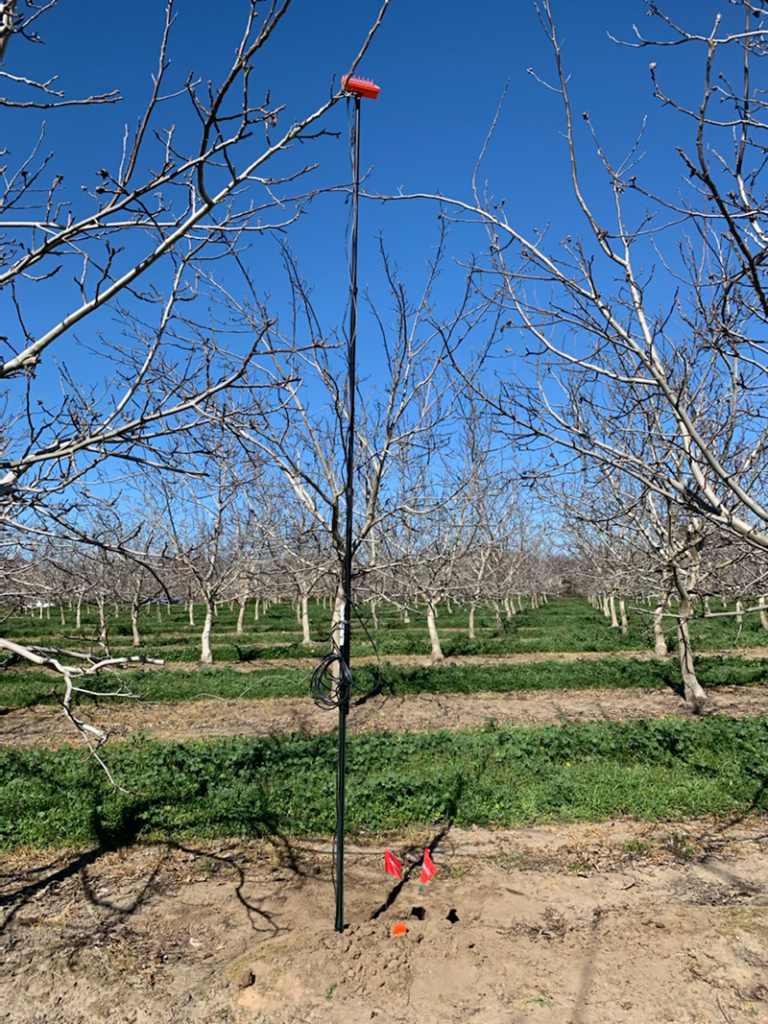Process Improvement for Regenerative Practices in Nut Trees
If you are like the majority of California pistachio and almond farmers and have a multi-generational family farm, your goal is to pass it down to your children or grandchildren. This means that land stewardship is a key focus and sustainable business decisions are foundational for keeping operations strong and resilient for the long term. You are striving for a sustainable food system that connects your business and consumers, building value over the long term. To achieve this, you need a path for continuous improvement along the way.
Regenerative and sustainable practices begin with the soil
Healthy soils deliver more crop consistency, quality, and yields. Soil health and regenerative practices go hand in hand to enhance soil health and optimize crop quality and yield while protecting long-term soil productivity for nut trees. Process control measures can proactively meet regenerative and climate smart objectives and performance measures for soil health, soil conservation, water use, and water quality in nut tree orchards. While there are a variety of climate smart techniques that can be deployed over time in the field to improve soil health, one very simple change can be made in the first season by using low-cost, below ground technology that give insights that drive better irrigation decisions.
What’s your current assessment? Update your baseline.
Review the practices you have in place and document those that need improvement to grow your crops sustainably. Growers don’t all start from the same place and many nut growers have already made steps toward conservation. You may already be using some sustainable or regenerative practices such as cover crops, or water usage management. This means it’s important to do an overall assessment of where you are today so that you have a baseline against which to measure continuous improvement over time.

Begin data collection
Data is your friend in this effort.
Use ag technologies such as IoT sensors above ground, below ground, or on the leaf, to benchmark where you are today, your soil health, water infiltration and capacity, salinity levels, your average yields, the amount of inputs you are using today, and farm profitability numbers. Use this baseline to begin your process control improvement over time. You’ll be able to measure results season over season.
Inspect your irrigation system
No matter how you look at it, nut trees consume a lot of water so you want to avoid wasting a drop. Even if you have already moved to a more water conscious drip or micro irrigation system, issues can arise. In particular, irrigation leaks can waste gallons of water. Take a look at:
- Filtration
- Efficiency
- Uniformity of delivery
- Leaks
- Runoff
- Water quality
Keeping your irrigation system well maintained is critical to water conservation efforts.
Get support
Start a support group. Talk with other growers in your area and compare approaches and numbers. What are they doing? What’s worked for them and what hasn’t?
Talk to your local cooperative focusing on sustainability such as Greenpoint Ag or regenerative ag or sustainability specialists covering a number of different crops such as Aqua4D or Understanding Ag.
Look for educational and farm research programs such as TAPS, Master Irrigators, university extension programs and demonstration fields. AquaSpy supports a number of these programs.
Explore standards
It might be helpful to utilize defined standard to focus your efforts. The Leading Harvest Farmland Management Standard is designed to address farmers’ unique needs and grow with agricultural operation over time, providing a framework for continuous improvement. The Leading Harvest Farmland Management Standard 2020 program is a third-party audited certification program that provides assurance for the sustainability of farmland management. It is an outcome-based program which relies on users to provide conformance evidence to demonstrate their conformance with the program.
Look for grants and funding programs
Look for state and federal programs. Some examples include:
NRCS Climate-Smart 2024 Mitigation Activities https://www.nrcs.usda.gov/conservation-basics/natural-resource-concerns/climate/climate-smart-mitigation-activities
California Department of Food and Agriculture (CDFA) Healthy Soils Program https://www.cdfa.ca.gov/healthysoils/
Blue Diamond USDA Climate Smart Grant https://bluediamondgrowers.com/usda-climate-smart-grant/
Conservation Stewardship Program (CSP) https://www.almonds.com/tools-and-resources/grower-tools/incentive-opportunities
Regional Conservation Partnership Program (RCPP) https://www.nrcs.usda.gov/programs-initiatives/rcpp-regional-conservation-partnership-program
When’s the best time to start or hone your regenerative practices for your nut trees? It’s today. For more information on how AquaSpy data insights can help you with your baseline metrics and process control for continuous improvement, contact sales today.
Related articles:
https://aquaspy.com/start-your-regenerative-ag-continuous-improvement-journey-here/
https://aquaspy.com/impacts-and-risks-from-rising-soil-salinity-in-agricultural-soil/

